|
|
|
 |
 |
 |
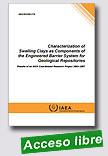 |
Characterization of Swelling Clays as Components of the Engineered Barrier System for Geological Repositories
IAEA TECDOC, 2013, 118 p.
This report presents the results of a coordinated research projects (CRP) carried out between 2002 and 2007 on the subject of swelling clays proposed for use as a component in the engineered barrier system (EBS) of the multibarrier concept for disposal of radioactive waste.
In 2002, under the auspices of the IAEA, a number of Member States came together to form a Network of Centres of
|
Excellence on Training in and Demonstration of Waste Disposal Technologies in Underground Research Facilities (URF Network). This network identified the general subject of the application of high swelling clays to seal repositories for radioactive waste, with specific emphasis on the isolation of high level radioactive waste from the biosphere, as being suitable for a CRP.
Existing concepts for geological repositories for high level radioactive waste and spent nuclear fuel require the use of EBSs to ensure effective isolation of the radioactive waste. There are two major materials proposed for use in the EBS, swelling clay based materials and cementitious/concrete materials. These materials will be placed between the perimeter of the excavation and the waste container to fill the existing gap and ensure isolation of the waste within the canister (also referred to as a container in some EBS concepts) by supporting safety through retardation and confinement. Cementitious materials are industrially manufactured to consistent standards and are readily available in most locations and therefore their evaluation is of less value to Member States than that of swelling clays. There exists a considerable range of programme development regarding qualification of swelling clay materials. Some Member States with advanced repository concepts have identified potentially suitable swelling clay materials for use in these underground facilities. Given the quantities of clay material needed for a repository application, the identification of potentially suitable materials located within or near to Member States is of considerable interest, particularly for those with more limited resources to apply to their repository programmes.
This report provides: An overview of the repository concepts of the Member States involved in the CRP; A general description of key material properties and a means of assessing those properties of relevance to screening potentially suitable swelling clays for repository use; A summary of the properties measured for the candidate materials selected by each of the participating Member States and a preliminary assessment of their potential suitability for use as a component of the EBS of a deep geological repository. Overall, it is concluded that the major technical goal to assist in the identification of suitable clay deposits in Member States has been achieved. Moreover, by participating in the CRP the Member States appear to have advanced their programmes in a number of other ways.
Specifically, by their involvement, the participants have joined and enlarged the international group of experts able to assist in the safe disposal of high level radioactive waste.
Extraído de: http://www-pub.iaea.org/MTCD/Publications/PDF/TE-1718_web.pdf |
 |
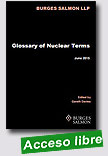 |
Glossary of Nuclear Terms
Burges Salmon LLP (UK), June 2015, 74 p.
Originally developed by our colleagues at Burges Salmon for their 'Guide to Nuclear Law', this A to Z glossary has been expanded to assist organisations and individuals interested in joining supply chain initiatives.
The nuclear industry uses a unique array of jargon, terminology and acronyms, which can be bewildering and confusing to newcomers. This Glossary of Key Terms and Acronyms has been produced to assist those new to the UK
|
civil nuclear industry, by explaining and de-mystifying some of the terminology that will be encountered on a daily basis. Understanding the terminology will lead to a greater understanding of the sector, its components and how it works.
Extraído de: http://www.niauk.org/a-to-z-glossary
|
 |
 |
The Fukushima Daiichi Accident
IAEA Non-serial Publications, 2015, 1.254 p.
The Fukushima Daiichi Accident consists of a Report by the IAEA Director General and five technical volumes. It is the result of an extensive international collaborative effort involving five working groups with about 180 experts from 42 Member States with and without nuclear power programmes and several international bodies. It provides a description of the accident and its causes, evolution and consequences, based on the evaluation of data and information from a large number
|
of sources available at the time of writing.
The Fukushima Daiichi Accident will be of use to national authorities, international organizations, nuclear regulatory bodies, nuclear power plant operating organizations, designers of nuclear facilities and other experts in matters relating to nuclear power, as well as the wider public.
The set contains six printed parts and five supplementary CD-ROMs.
Contents: Report by the Director General; Technical Volume 1/5, Description and Context of the Accident; Technical Volume 2/5, Safety Assessment; Technical Volume 3/5, Emergency Preparedness and Response; Technical Volume 4/5, Radiological Consequences; Technical Volume 5/5, Post-accident Recovery; Annexes.
The Report by the Director General is also available separately in Arabic, Chinese, French, Russian, Spanish and Japanese and these are available from the languages link below.
Report by the Director General | Technical Reports and other Languages
Extraído de: http://www-pub.iaea.org/books/IAEABooks/10962/The-Fukushima-Daiichi-Accident
|
 |
 |
Plutonium was first separated by the United States during the Second World War. Uranium was loaded into nuclear reactors, irradiated, cooled, and then chemically “reprocessed” in another facility to recover the plutonium. The reactors and the reprocessing plant were built as part of the secret atomic bomb project. Since then, eight other countries also have produced and separated plutonium for weapons.
|
Starting in the 1960s, some of the nuclear-weapon states and a few non-weapon states started to separate plutonium for civilian use from spent fuel produced by power reactors.
The United States ended its civilian reprocessing program in 1972 and the nuclearweapon states that are parties to the NPT ended their military reprocessing activities with the end of the Cold War. Today there are only a handful of countries with active civilian reprocessing programs: China, France, India, Japan, Russia and the United Kingdom.
This report looks at the history, current status and prospects of these programs. It also looks at the rise and fall of reprocessing in Germany and the agitation in South Korea for starting a program. There are also three technical chapters at the end assessing: the utility of reprocessing for managing spent nuclear fuel; the economics of reprocessing and plutonium use; and the radiological risk from reprocessing plants.
Extraído de: http://fissilematerials.org/library/rr14.pdf
|
 |
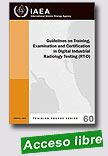 |
Guidelines on Training, Examination and Certification in Digital Industrial Radiology Testing (RT-D)
The IAEA promotes industrial applications of non-destructive testing (NDT) technologies. NDT
methods are primarily used for the detection, location and sizing of surface and internal defects in, for example, welds, castings, forging, composite materials and concrete. Various NDT methods are also used in the preventive maintenance of nuclear power plants, aircraft and bridges. Thus, NDT
|
technology contributes significantly to the improvement of the quality of industrial products and the integrity of equipment and plants.
The introduction of powerful computers and reliable imaging technology has had significant impact on traditional, nuclear based NDT methods. During the introduction phase in digital industrial radiography (DIR), the digitization of films provided economy of storage, efficiency of communication and accuracy of dimensional measurement. NDT laboratories are progressing rapidly with the digitalization of NDT data. New radiologic imaging techniques in DIR, using image intensifier systems, computed radiography with phosphor imaging plates and digital detector arrays, have increased the capacity for visualization of defects and have revealed new potential for accurate evaluation and measurement.
The development of DIR has been of continuing interest to the IAEA and national NDT societies in recent years. This has led to the formation of projects on the development and application of advanced industrial radiography and tomography techniques under the IAEA Regional Co-operative Agreement for Research, Development and Training Related to Nuclear Science and Technology.
This publication is intended to provide resource material to support vocational training to NDT
radiographers on digital industrial radiography and to help NDT training centres and certification bodies in Member States to establish their own courses, curricula and certification systems in this technology.
Extraído de: http://www-pub.iaea.org/MTCD/Publications/PDF/TCS-60_web.pdf
|
 |
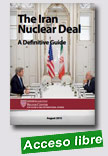
|
The Iran Nuclear Deal - A Definitive Guide
Belfer Center for Science and International Affairs, August 2015, 41 p.
This report has been produced in the interest of contributing to informed Congressional review and public discourse on a comprehensive nuclear agreement with Iran—the Joint Comprehensive Plan of Action (JCPOA). It provides a concise description of the agreement and the accompanying UN Security Council Resolution 2231. It also includes a balanced assessment of the agreement's strengths and weaknesses |
with respect to its central objective to prevent Iran from acquiring nuclear weapons. The team of experts who prepared the report includes Democrats, Republications, independents, and internationals. Noting areas of disagreement among themselves, they agreed that this report provides an accurate description and balanced assessment of the agreement.
Extraído de:
http://belfercenter.ksg.harvard.edu/publication/25599/
iran_nuclear_deal.html?breadcrumb=%2F
|
 |
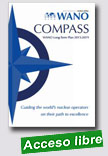 |
Compass - World Association of Nuclear Operators Long-Term Plan 2015-2019
World Association of Nuclear Operators (WANO), 22/06/2015, 28 p.
The World Association of Nuclear Operators (WANO) has today published Compass, its long term plan for the period 2015-2019. The new plan is intended to guide the organisation through the next five years in a manner that supports WANO's existing activities, while paving the way for the organisation to become more effective in key areas such as new build and
|
end of life, life extensions and decommissioning of plants.
Compass is formed of four focus areas, which each outline the areas of work to which WANO will direct its attention and resources over the next five years. The focus areas are: Continue to support and set the standards of high performance of the world's existing nuclear fleet; Build and maintain a highly-trained, professional workforce within WANO; Forge a stronger WANO through more consistent, credible products and programmes, including providing nuclear leadership training for our members; Instil superior standards among new industry entrants and maintain them for end-of-life, life extensions and decommissioning.
Extraído de: http://www.wano.info/en-gb/mediaandevents/pressreleasesandannouncements/Pages/Compass.aspx
|
 |
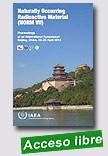 |
Naturally Occurring Radioactive Material (NORM VII): Proceedings of an International Symposium, Beijing, China 22-26 April 2013
IAEA Proceedings Series, 2015, 686 p.
This publication is the proceedings of the Seventh International Symposium on Naturally Occurring Radioactive Material (NORM), which was organized in cooperation with the IAEA as part of its programme to promote application of the safety standards to natural sources of radiation and to disseminate information to Member States. NORM VII provided an
|
opportunity to review the many developments that had taken place over the past three years since the previous symposium in this series. This period was characterized by ongoing activities to revise international standards on radiation protection and safety and the further implementation of these standards in many countries. The proceedings contain 48 oral presentations and four rapporteur reports, as well as a summary that concludes with the main findings of the symposium. Text versions of 19 poster presentations are provided on the attached CD-ROM.
Supplementary Materials
Extraído de: http://www-pub.iaea.org/books/IAEABooks/10675/Naturally-Occurring-Radioactive-Material-NORM-VII-Proceedings-of-an-International-Symposium-Beijing-China-22-26-April-2013
|
 |
|

|
The Advanced Nuclear Industry
Third Way (USA), June 15, 2015, 12 p.
The American energy sector has experienced enormous technological innovation over the past decade in everything from renewables (solar and wind power), to extraction (hydraulic fracturing), to storage (advanced batteries), to consumer efficiency (advanced thermostats).
What has gone largely unnoticed is that nuclear power is poised to join the innovation list.
A new generation of engineers, entrepreneurs and investors
|
are working to commercialize innovative and advanced nuclear reactors.
Extraído de: http://www.thirdway.org/report/the-advanced-nuclear-industry
|
 |
 |
EURADOS Intercomparison 2012 for Whole Body Dosemeters in Photon Fields
European Radiation Dosimetry e.V. (EURADOS), April 2015, 205 p..
EURADOS Working Group 2 (WG2) has developed a system for a self-sustained programme of regular intercomparisons. Four intercomparisons for whole body dosemeters (IC2008, IC 2010, IC2012 and IC2012n) and one for extremity dosemeters (IC2009) have now been carried out. The number of participating systems has increased significantly from 62 in 2008 to 88 in 2012.
|
IC2012 was carried out by an organization group (OG) composed of Andrew McWhan and Wioletta Dobrzynska (Cavendish Nuclear Limited, co-ordinator and co-ordinating laboratory), Tom Grimbergen (NRG), Ana Maria Romero (CIEMAT), Hannes Stadtmann (Seibersdorf Laboratories) and Markus Figel (Helmholtz Zentrum München).
There were 74 participating institutes from 30 countries (8 from outside of the EU) with 88 dosimetry systems. However, one participant decided to withdraw after hearing about the problems with some of the irradiations (see below). Participants’ systems included 59 TLD, 12 Film, 11 OSL and 5 dosemeter systems based on other techniques (Other), i.e. radio photoluminescence (RPL), direct ion storage (DIS) or active personal dosemeters (APD). As with IC2010, there were a sufficient number of OSL systems for them to be included as a separate category in the analysis. A total of 2288 dosemeters were received and re-labelled, 1760 of which were then irradiated and processed. All irradiations were carried out by GAEC (Greek Atomic Energy Commission, Greece). Their irradiation laboratory is accredited to EN ISO/IEC 17025 as required by the protocol developed by the OG.
Extraído de: http://eurados.org/~/media/Files/Eurados/
documents/EURADOS%20Report%202015-02.pdf
|
 |
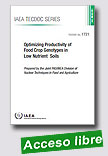 |
Optimizing Productivity of Food Crop Genotypes in Low Nutrient Soils
IAEA TECDOC, 2014, 342 p.
Global climate change and variability are likely to exacerbate plant abiotic stress in the coming decades by increasing water stress and by accelerating soil fertility degradation. To respond to this set of challenges, there is a need to develop agricultural systems with significantly greater productivity and resilience, while at the same time with more efficient use of limited nutrient resources. This publication summarizes the output |
from a FAO/IAEA coordinated research project (CRP) on optimizing productivity of food crop genotypes in low nutrient environments over a five year period across a wide range of geographical areas and environments. It demonstrates that root traits are vital for nitrogen (N) and phosphorus (P) acquisition from low nutrient soils. The CRP participants created a database on cereals and legumes with better root characteristics and greater productivity in low input agriculture. The use of N-15 and P-32 as tracers was valuable to understanding the physiological explanations for superior genotype performance in low N and P soils.
Extraído de:
http://www-pub.iaea.org/books/IAEABooks/10503/Optimizing-Productivity-of-Food-Crop-Genotypes-in-Low-Nutrient-Soils
|
| |
| |
|
|
| |
| |
|
|
| |
|
|
|
|
|
